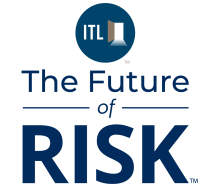At Westfield Insurance, I'm seeing firsthand how data is reshaping our industry. The industry possesses a significant amount of data, but is it the right data? Previously, this volume of data was enough for an underwriter to assess risk. Today, to write sustainable business, underwriters have to cut through the noise and extract actionable insights, which raises the question: Is the insurance industry moving into the era of Underwriting 2.0?
During the fourth episode of insurtech Send's "Infuse" webinar, I had the chance to discuss how data is shaping the underwriting process with several other industry leaders. I pointed out that professionals across many disciplines at Westfield are embracing AI and learning how to appropriately integrate it into their underwriting workflows. However, fellow panelist Kelly Cusik, MD, of Deloitte Consulting, was candid about how the industry lacked maturity in tapping into generative AI. Kate Enright, head of data at Miller Insurance Services, was optimistic about unlocking the full potential of data by adopting modern technologies.
The consensus was clear: Underwriting has evolved, and data is now at the heart of how we assess risk and price policies.
Here are four ways to leverage data as usable, insightful, actionable, and truly embrace Underwriting 2.0:
1. Evolve from process-driven to data-driven
Although underwriting is still rooted in process, we are now supplementing it with advanced data sources and AI-powered tools to get a deeper picture. As an example, at Westfield, we are integrating third-party data that leverages AI to look at risk characteristics across the underwriting cycle from ingestion to submission. These tools will not replace underwriters but provide them the right data at the right time to speed decisions and improve consistency, ultimately influencing sustainability. And it's not just us. My peers across the industry from those like Miller Insurance Services to consulting firms like Deloitte are all leaning into modernization. APIs, portfolio-level exposure tracking, and digital contract tools, are all playing a role as underwriting goes through a transformation.
2. Be AI-ready
You may be surprised to learn that AI is not new to the insurance industry. We've been exploring machine learning and predictive analytics for years as a way to support risk modeling, pricing and triage.
Gen AI is just the next phase in the AI evolution. During the webinar, Kelly indicated that many companies have the tools but lack the trust and training in adopting gen AI. She suggests that with the right culture and leadership, the industry will see more smart technology helping underwriters do what they do best.
3. Make change interesting
Earlier this year, Westfield hosted an AI Day across the company. We had more than 200 employees participate. We brought in a speaker from a large AI research and deployment company, hosted breakout sessions, and gave employees hands-on access to AI tools. The energy was incredible.
People weren't afraid. They were curious. They saw how AI could make their workday easier, not harder. And they walked away with real ideas that could help solve business problems and achieve business goals. That's what happens when you approach innovation as a team sport with the right guardrails.
4. Remember: Insurance is still an art and not all science
During the webinar, Kelly reminded the audience not to lose sight of the human side of insurance. She suggested that industry leaders must invest in training, cross-functional collaboration, and creating space for experimentation. Kate Enright from Miller Insurance Services explained that real transformation happens when data, people, and process evolve together. She suggests insurers need to spend 50% of the time on the value story, 25% on data, and the rest on making change engaging.
Final Thoughts
Underwriting continues to change. It's no longer just about process and cost control. It's about how effectively you use data to make better decisions. And the future is collaborative, data-driven, and human at its core. We're not just underwriting risk any more. We're underwriting the future—and I couldn't be more excited about where we're headed.






